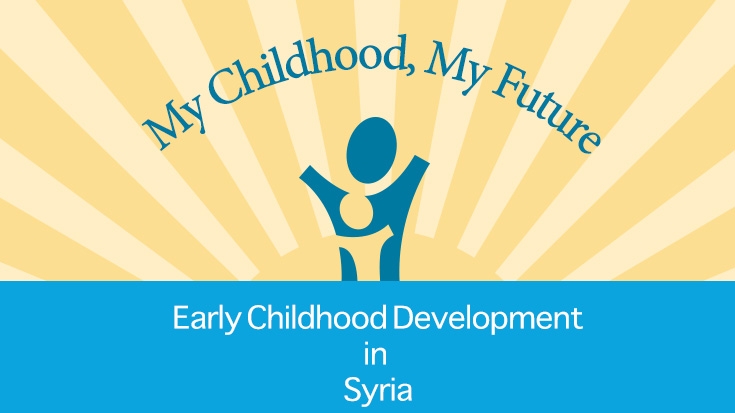The status of Early Childhood Development (ECD) in Pre-conflict Syrian Arab Republic
- While almost all (96%) of births were attended by a skilled attendant, 88% of births received prenatal care, and only 61% regular prenatal care.
- There were 17 deaths in the first year of life per 1000 births.
- Only 78% of children age 1 were fully immunized, leaving almost a quarter at increased risk of illness or death.
- Over a quarter (26%) of children were stunted, and only 30% lived in households with adequately iodized salt, limiting their chances for healthy physical and brain development.
- Just 17% of 3–5 year olds were in Early Childhood Care and Education (ECCE) in 2009, and only half (55%) had experienced any childhood development activities.
- Violent discipline was an almost universal problem, with 87% of children having experienced it.
- Many children’s opportunities for healthy development are very likely to have deteriorated inside Syria because of conflict.
Figure 1. Early childhood development indicators for Syrian Arab Republic (%)
Source: Authors’ calculations based on Syria MICS 2006 and Syria PAPFAM 2009
Prior to the civil conflict, children in Syria had unequal opportunities of healthy development, based on factors beyond their control.
There are substantial differences in the opportunities children have for healthy development and accumulating human capital. Early childhood is when cycles of poverty and inequality are transmitted across generations. Children tend to be consistently advantaged or disadvantaged across a variety of different dimensions of ECD, and can have very different life chances based on just a few family background characteristics. If we observe a child who lived in a rural, northern area, in the poorest 20% of households, and with uneducated parents (a “least advantaged” child), and compare that child to one who had parents with higher education, was from the richest 20% of households, and lived in an urban, coastal area (a “most advantaged” child), we find that they have different chances of healthy early childhood development. Figure 2 presents the chances of different ECD indicators for these “least advantaged” and “most advantaged” individuals.
For every single indicator, the least advantaged child faced the prospect of poorer ECD indicators. Comparing the least and most advantaged, the gap in prenatal care was 47 percentage points, and the gap in regular prenatal care was 69 percentage points. The least advantaged child was twice as likely to die in their first month and twice as likely to die in their first year. The least advantaged child was 32 percentage points less likely to be immunized and 30 percentage points more likely to be stunted. There was a 71 percentage point gap in having access to iodized salt, and a 53 percentage point gap in the probability of engaging in at least four childhood development activities. The largest relative difference was in ECCE attendance, where the most advantaged child was thirty-two times more likely to be in ECCE than the least advantaged. The least advantaged child was also slightly more likely to be engaged in child labor, and to be violently disciplined.
Figure 2. Inequality in the chances for healthy early childhood development (%)
Source: Authors’ simulations of chances for a “most advantaged” and a “least advantaged” child based on calculations using Syria MICS 2006 and Syria PAPFAM 2009.


